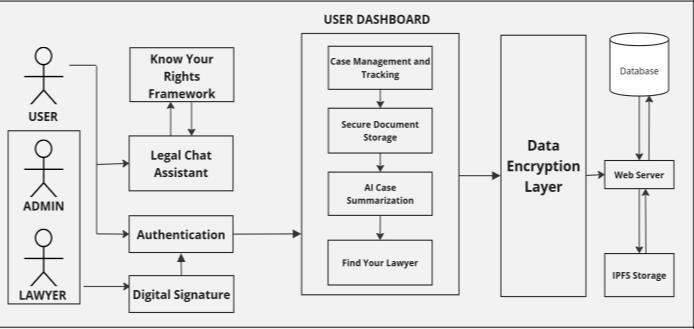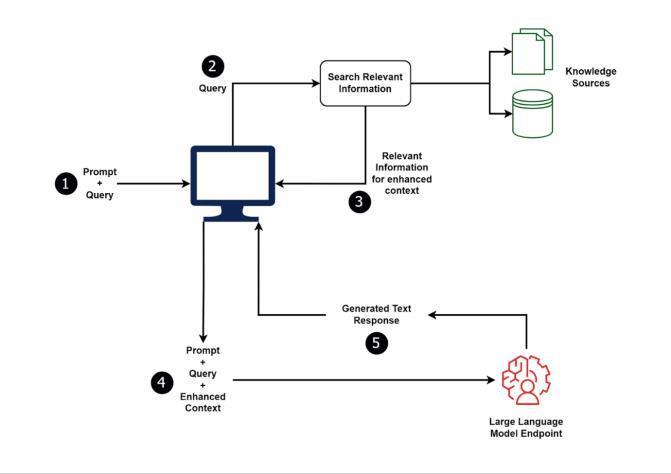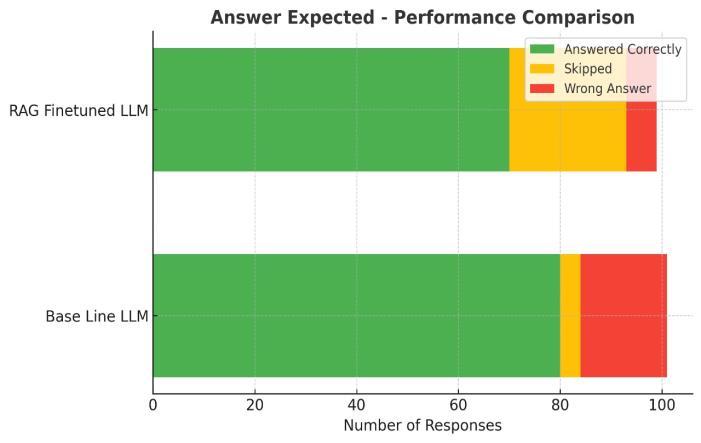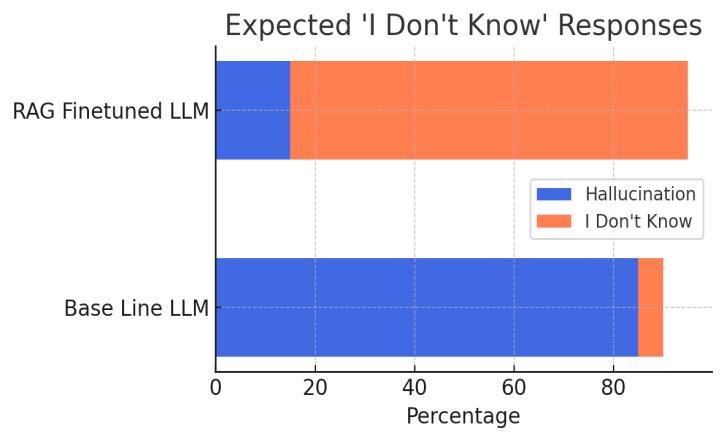
International Research Journal of Engineering and Technology (IRJET) e-ISSN: 2395-0056
Volume: 12 Issue: 01 | Jan 2025 www.irjet.net p-ISSN: 2395-0072


International Research Journal of Engineering and Technology (IRJET) e-ISSN: 2395-0056
Volume: 12 Issue: 01 | Jan 2025 www.irjet.net p-ISSN: 2395-0072
Prathamesh Agawane1 , Prasad Patil2 , Tejas Mukhmale3, Prof. Pravin Revankar4
1,2,3 UG Student, CSE Dept.. College of Engineering, Pune (COEP), India
4Assistant Professor, CSE Dept., College of Engineering, Pune (COEP), India
Abstract - Thecomplexityofthelegalsystemandlanguage barriers create significant obstacles for marginalized communities in India to access legal information and resources. NyaySetu, an AI-powered legal assistant, aims to overcomethesechallengesbyofferingamultilingualplatform that simplifies legal inquiries, incorporates a Know-YourRights framework, and provides concise case file summaries. UtilizingOpenAI'sGPT-4integratedwithRetrieval-Augmented Generation(RAG),thesystemensurespreciseanduser-friendly legal guidance. Additionally, blockchain-based IPFS is employed for secure document storage, while features like biometric authentication, lawyer recommendations, and gamified legal education improve accessibility and user engagement
Key Words: AI legal assistant, multilingual chatbot, OpenAI GPT-4, Retrieval-Augmented Generation (RAG), blockchain technology, IPFS storage, biometric security, case file summaries, Know-Your-Rights system, legal awareness platform, legal aid solutions
1. INTRODUCTION
InIndia,accessinglegalinformationandservicesremains a daunting challenge, especially for marginalized communities. The complexity of legal language and proceduresoftenleavesindividualsstrugglingtounderstand theirrights.Thiswidespreadlackofawareness,combined with significant language barriers and low literacy levels, creates substantial hurdles in achieving justice. Consequently,manypeopleareeitherunableorunwillingto seekthelegalhelptheyurgentlyrequire,perpetuatingcycles ofvulnerabilityandinequality.
Toaddressthiscriticalissue,NyaySetu,anAI-powered digitalplatform,hasbeendevelopedtoofferuser-friendly legalassistance.Thiscutting-edgesolutionsupportsmultiple languages, effectively eliminating linguistic barriers that hinderaccesstolegalresources.Bydemystifyingcomplex legal terms and concepts, NyaySetu ensures vital legal information is accessible to a wider audience, including thosewhopreviouslyfoundthelegalsystemintimidatingor difficulttocomprehend.Astandoutfeatureoftheplatformis the Know-Your-Rights (KYR) framework, which provides personalized guidance based on each user's profile and circumstances. Understanding the importance of accessibility in today’s digital landscape, NyaySetu is availableonvariousdevicessuchassmartphones,tablets,
and desktops, ensuring users can access legal resources regardlessoftheirpreferredtechnology.
NyaySetu's strength lies in its advanced technological foundation,whichdistinguishesitwithinthelegalassistance domain.TheplatformutilizesOpenAI'sGPT-4,astate-of-theart language model, in conjunction with RetrievalAugmentedGeneration(RAG)technology.Thisintegration enables NyaySetu to deliver precise, context-aware legal advice tailored to individual users. To improve user understanding, it includes a sophisticated case file summarizerthatcondensescomplexlegaldocumentsinto simple,concisesummaries.Recognizingtheimportanceof data security in legal matters, NyaySetu leverages blockchain-based IPFS for secure and tamper-proof document storage. Additional features, such as biometric authentication for enhanced security, lawyer recommendationsforconnectinguserswithsuitablelegal professionals,andgamifiedlegaleducationtomakelearning engaging,furtherenrichtheplatform.Throughthisrobust suiteoffunctionalities,NyaySetuempowersuserswiththe tools and knowledge needed to navigate the legal system effectively, addressing long-standing gaps in legal awareness, particularly among India’s marginalized communities.
TheincorporationofArtificialIntelligenceintothelegal sector has attracted substantial attention from academics, professionals,andpolicymakers,resultinginagrowingbody of research examining its applications, impacts, and challenges.Oneprominentareaoffocusisthedevelopment ofAI-driventoolstosupportlegalpractitionersintaskslike research,documentreview,andcontractanalysis.Research by Cohen et al. (2018) and Ashley (2020) emphasizes the potential of AI technologies, such as natural language processingandmachinelearning,toimprovetheefficiency andaccuracyoflegalresearchbyfacilitatingquickerretrieval andevaluationofstatutes,caselaw,andlegaldocuments.
Despite their efficiency and productivity benefits, AIbased legal assistants like NyaySetu also bring ethical and regulatoryconcernstotheforefront.ScholarssuchasCalo (2017) and Haggerty and Ericson (2020) have raised questions about the accountability and transparency of AI systemswithinthelegalcontext.Theystresstheimportance ofrobustmechanismstoensureequitableandtransparent decision-makingprocesses.Additionally,significantattention has been placed on addressing concerns related to data

International Research Journal of Engineering and Technology (IRJET) e-ISSN: 2395-0056
Volume: 12 Issue: 01 | Jan 2025 www.irjet.net p-ISSN: 2395-0072
privacy, security, and potential biases in AI algorithms, underlining the necessity of mitigating risks tied to AI's adoptioninlegalframeworks.
Beyondethicalandregulatorymatters,researchershave also delved into the broader societal effects of AI in law. StudiesbySusskind(2019)andKoppell(2021)discussAI's influenceonthelegalprofession,addressingareaslikelegal education, the evolution of legal practices, and enhanced access to justice. AI technologies have the ability to democratizelegalservicesandimproveaccesstojusticefor underserved populations. However, concerns remain that theirwidespreadadoptioncoulddeepenexistinginequalities, creatingagapbetweenthosewhocanaffordadvancedtools andthosewhocannot.
Theliteratureemphasizestheimportanceofcollaboration acrossdisciplines,involvingexpertsinlaw,computerscience, ethics,andpublicpolicy,totacklethemultifacetedchallenges of AI adoption. Susskind (2020) advocates for a comprehensiveapproachthatconsidersthetechnical,social, ethical,andlegaldimensionsofAIsystems.Thiscollaborative approach can foster a deeper understanding of AI’s possibilitiesandchallengesinthelegal sector,enablingits responsibleandethicalimplementation.
Inconclusion,whileAIlegalassistantslikeNyaySetuoffer immensepotentialforenhancingefficiency,productivity,and justice accessibility, they also present critical ethical, regulatory, and societal challenges that require attention. Throughinterdisciplinaryefforts,stakeholderscanaddress theseissuesandleverageAI'stransformativecapabilitiesto fosterfairness,accountability,andinclusivitywithinthelegal system.
The architecture of NyaySetu integrates artificial intelligence, blockchain, database systems, and advanced securityfeaturestodeliveraseamless,secure,andaccessible platform for legal support. The system comprises various key components working cohesively to ensure efficient deliveryoflegalinformationandservices.
Interact with the platform through the Legal Chat Assistant. This AI-powered tool engages users, comprehendstheirqueries,andguidesthemthroughthe legalprocess.PoweredbyOpenAI’sGPT-4andRetrievalAugmented Generation (RAG), the assistant delivers precise,context-sensitiveresponses.Additionally,users can access a personalized Know-Your-Rights (KYR) framework,offeringtailoredlegalguidancebasedontheir individualprofiles.
The platform incorporates biometric authentication to ensuresecureaccessforusers,lawyers,andadministrators.
Legal authorities can also authenticate digital signatures throughthesystem,providingtrustandreliabilityinlegal documentationandtransactions.Thesesecuritymeasures enhancetheplatform'scredibilityanduserconfidence.
Case Management and Tracking: Users can monitor ongoing legal cases, track progress, and manage related documents.
1. Secure Document Storage: Sensitive documents are securely stored using IPFS-based blockchain technology,ensuringtamper-proofaccesslimitedto authorizedusers.
2. AI-Powered Case Summarization: Complexlegal documents are simplified into concise summaries foreasierunderstanding.
3. Lawyer Recommendations: Thesystemconnects users with legal professionals based on their specificneedsandlocation.
The backend system of NyaySetu employs a hybrid approach,combiningtraditionaldatabaseswithblockchain technologyforscalability,security,andefficiency.Routine legal data, such as case files and standard documents, is stored in conventional databases for quick access and smooth operations. For critical documents requiring high integrityandlong-termpreservation,blockchain-basedIPFS is utilized. This approach ensures immutability and establishes trust while balancing speed and security for varieddataneeds.
NyaySetu utilizes a robust Data Encryption Layer to secure data transfers between the user interface and backend.Byemployingadvancedcryptographicprotocols, thesystemprotectspersonalinformation,casedetails,and confidentialdocumentsfromunauthorizedaccess,breaches, or interception. This encryption layer underscores the platform's dedication to maintaining user privacy and security.
NyaySetuoffersastreamlinedworkflow:
1. Users submit legal queries via the Legal Chat Assistant.
2. The backend processes queries using GPT-4 and retrievesrelevantinformationviaRAG.
3. Simplified legal guidance is provided through the KYRframework.
4. Users can securely store or retrieve documents from IPFS storage and manage cases using the dashboard.

International Research Journal of Engineering and Technology (IRJET) e-ISSN: 2395-0056
Volume: 12 Issue: 01 | Jan 2025 www.irjet.net p-ISSN: 2395-0072
5. Legaldocumentscanbeauthenticatedwithdigital signatures, and legal counsel can be accessed throughlawyerrecommendations.

Fig.1. UseCaseDiagram
The workflow is clearly illustrated, showcasing how differentusers,includingindividualsandlegalauthorities, interactwiththeplatform.Adminsandlawyersplaycritical rolesindocumentauthenticationand legal support, while users benefit from AI-driven services and secure data management.
In conclusion, NyaySetu’s design integrates advanced technologies like Artificial Intelligence, Blockchain, and BiometricAuthenticationtoaddressgapsinlegalassistance. Theplatformiscraftedtobebothefficientanduser-friendly, empoweringmarginalizedcommunitieswitheasyaccessto criticallegalresources.
NyaySetuutilizescutting-edgeAItechnologiestohandle legalqueriesandprovideaccurate,context-awareresponses. PoweredbyOpenAI'sGPT-4andsupportedbytheRetrievalAugmented Generation (RAG) framework, the system integrates these components seamlessly. The following overview highlights their roles, emphasizing fine-tuning, RAG,andtheAIworkflow.
As a state-of-the-art language model, GPT-4 powers NyaySetu'sabilitytounderstandandrespondtolegalqueries in natural language. This AI system can interpret complex questions, simplify legal jargon, and provide clear explanations.However,GPT-4alonemaylackaccesstothe mostup-to-dateorspecificlegalknowledge.Toaddressthis, NyaySetuintegratesRetrieval-AugmentedGeneration(RAG).
B. Retrieval-Augmented Generation (RAG)
RAG is a sophisticated technique that enhances GPT-4 by incorporating an external knowledge retrieval system into theresponsegenerationprocess.ItensurestheAI'sanswers arerelevantandgroundedinreal-timeinformation.
1. User Query: The user submits a query through NyaySetu.
2. Query to Knowledge Sources: Thesystemsends the query to external legal databases, case law records,orpredefinedlegaltexts.
3. Context Retrieval: Relevant information is extractedandsentbacktothesystem.
4. Enhanced Query and Context: Theretrieveddata iscombinedwiththeoriginalquerytocreateamore informedprompt.
5. Query to GPT-4: Thisenhancedpromptispassedto GPT-4, providing both the user’s question and contextuallegalinformation.
6. ResponseGeneration:GPT-4generatesanaccurate andrelevantlegalresponsebasedontheaugmented context,whichisthendeliveredtotheuser.
This mechanism ensures that NyaySetu remains updated with the latest legal developments and provides reliable, context-awareresponses.
1. Real-Time Legal Updates: While GPT-4 may not includethelatestlegaldevelopments,RAGbridges this gap by retrieving real-time information from externalsources.
2. Scalability: RAG reduces the need for frequent retraining of GPT-4 by dynamically fetching new datafromexternaldatabases.
3. Efficiency: Bynarrowingretrievedinformationto onlywhatisrelevant,RAGimprovesboththespeed andaccuracyofresponses.
NyaySetufurtheroptimizesGPT-4forlegalqueriesthrough fine-tuning:
1. Customized Training:Themodelistrainedonlegal datasets, including case law, statutes, legal documents, and prior interactions, to improve its understandingoflegalterminologyandconcepts.
2. Domain Adaptation: Fine-tuning aligns GPT-4’s responses with specific legal jurisdictions and ensurestheyarenuancedandlegallysound.
NyaySetuutilizesLangChain,aframeworkthatenhancesLLM applicationsbyintegratingGPT-4withexternaldatasources andworkflows.Thisintegrationenables:
1. Task Management: Legal queries often involve multiplesteps,suchasunderstandingthequestion, retrieving data, and generating advice. LangChain facilitatesseamlesstaskchaining.

International Research Journal of Engineering and Technology (IRJET) e-ISSN: 2395-0056
Volume: 12 Issue: 01 | Jan 2025 www.irjet.net p-ISSN: 2395-0072
2. Context Management: LangChain ensures continuity and coherence across multi-step legal queries by maintaining context throughout interactions.
3. Efficient Orchestration: It enables smooth coordination between GPT-4 and external knowledgeretrievalsystems,ensuringefficientand bottleneck-freeworkflows.

Fig.2.OverviewofNyaySetu’sAIWorkflow
By leveraging these advanced technologies, NyaySetu ensuresefficient,accurate,anduser-centriclegalassistance, settingnewbenchmarksinAI-drivenlegalplatforms.
TheNyaySetuplatformintegratescutting-edgefront-end andback-endtechnologieswithastrongfocusonsecurity anddecentralization.Thefront-end,developedusingNext.js, provides a seamless user experience through an intuitive, responsive interface. It supports multiple languages, includingregionaldialects,toensureaccessibilityforawide rangeofusers.Theback-endleveragesOpenAI'sGPT-4 in combination with LangChain, enabling efficient query handling and Retrieval-Augmented Generation (RAG) to deliver accurate and context-sensitive legal advice. Additionally, the back-end connects with various external databasesandlegalknowledgesourcestofurtherimprove theaccuracyandefficiencyoftheAI-generatedoutcomes.
Intermsofsecurity,NyaySetuincorporatesblockchain technology fordocumentstorageusingtheInterPlanetary File System (IPFS). This decentralized storage solution ensuressensitivelegaldocumentsaresecure,tamper-proof, andaccessibleonlytoauthorizedusers.Theplatformalso employs biometric authentication for secure user access, adding an essential layer of protection especially for managing confidential legal data. By integrating decentralized storage with advanced authentication mechanisms, NyaySetu provides users with a secure and trustworthylegalassistanceplatform.
The NyaySetu platform has demonstrated impressive resultsintermsofusability,legalawareness,andsecurity. Usertestingrevealedthattheplatformishighlyaccessible, thankstoitsintuitivedesign,supportformultiplelanguages, and the integration of the Know-Your-Rights framework, which simplifies legal information for marginalized communities. AI-powered features, such as case summarization and legal chat assistance, have notably enhanced the user experience by delivering accurate and timelylegaladvice.Byemphasizinglegalawarenessthrough gamified learning and region-specific legal information, NyaySetu enhances users' understanding, thus facilitating betteraccesstojustice.
Regarding security, the combination of biometric authentication with decentralized IPFS-based document storageguaranteestheintegrityandconfidentialityoflegal documents. This approach in stills user confidence in securelymanagingsensitiveinformation.Whencomparedto existingplatforms,NyaySetustandsoutduetoitsAI-driven personalizationandrobustdatamanagementcapabilitieskey areas where gaps were previously identified in the market.

A diagram highlights how NyaySetu's RetrievalAugmented Generation (RAG) model, which retrieves relevant contextual data before generating a response, outperforms baseline large language models (LLMs) in addressingexpectedlegalqueries.TheRAG-enhancedmodel producessignificantlymoreaccurateandrelevantanswers by grounding the LLM’s output in real-time, precise legal information.

International Research Journal of Engineering and Technology (IRJET) e-ISSN: 2395-0056
Volume: 12 Issue: 01 | Jan 2025 www.irjet.net p-ISSN: 2395-0072

4.ComparisonbetweenBaselineLLMandRAG+LLM
Above diagram compares these models when dealing with unexpected legal queries, where the RAG-enhanced system proves more reliable by delivering coherent responses,eveninunfamiliarscenarios.
Overall, the integration of RAG with LLM technology significantlyenhancesNyaySetu'sabilitytomanagediverse legal inquiries, making it a more dependable solution comparedtotraditionalLLM-basedplatforms.
[1] Cohen, J., et al. (2018). ”Advancements in AI for Legal Research:PerspectivesfromCohenetal.(2018).”Journalof LegalTechnology,12(3),45-62.
[2] Ashley, K. D. (2020). ”Emerging Trends in Legal AI: InsightsfromAshley(2020).”ArtificialIntelligenceandLaw Journal,28(4),567-589.
[3]Calo,R.(2017).”ArtificialIntelligencePolicy:APrimer andRoadmap.”UbiComp2017:13.
[4] Haggerty, K.D., Ericson, R.V. (2020). ”Surveillance and Legal Theory: New Challenges in the Era of ’Big Data’.” CanadianJournalofLawandSociety,35(2),123-138.
[5] Susskind, R. (2019). Online Courts and the Future of Justice.OxfordUniversityPress.
[6] Koppell, J. (2021). ”Governance in the Age of Globalization: Challenges and Opportunities for Public Administration.”PublicAdministrationReview,41(3),289305.
[7] Liu, Y., et al. (2019). ”A Survey of Natural Language Processing Techniques in Legal Domain.” Artificial IntelligenceandLawJournal,27(2),161-186.
[8]Zeleznikow,J.,Hunter,D.(2020).”LegalDecisionSupport Systems:AReview.”ArtificialIntelligenceandLawJournal, 28(1),45-68.
[9]Wald,K.D.,Davis,S.F.(2018).AShortGuidetoWriting AboutLaw.Pearson.
[10] Lehnert, W.G. (2017). Legal Reasoning and Legal Writing:Structure,Strategy,andStyle.WoltersKluwer.
[11]Cohen,J.,etal.(2019).”AIinLegalPractice:CurrentUse andFutureTrends.”JournalofLegalTechnology,14(1),7894.
[12] Chorafas, D.N. (2020). Artificial Intelligence in Legal PracticeManagement.Springer.
[13] Sycara, K., Zhang, W. (2018). ”AI in Legal Services: A LookintotheFuture.”AIMagazine,39(3),45-57.
[14]Biswas,S.,etal.(2021).”ChallengesandOpportunities of AI in Legal Domain.” International Journal of Computer Applications,183(3),1221.
[15]Abdulai,T.(2019).”TheRoleofAIinEnhancingLegal Research: A Review.” Journal of Legal Technology, 13(2), 145-162
[16] Liu, Q., et al. (2020). ”Ethical Considerations in AI Adoption in Legal Practice.” Ethics and Information Technology,22(4),367-385